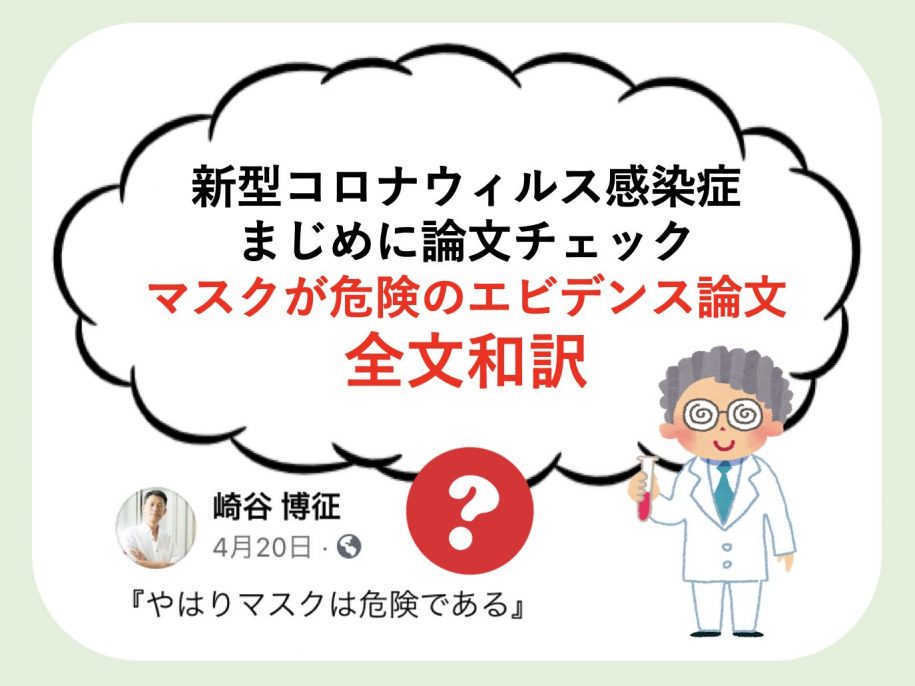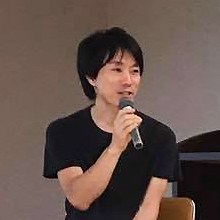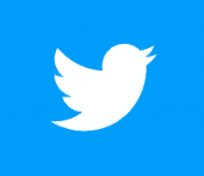「マスクで低酸素血症にはならない」〜崎谷博征先生、マスクが危険って本当ですか?その1〜
上の記事の続きです。論文内容を詳細に検討していく前に、皆さんにも日本語で読んで頂きたいと思い、和訳した全部をここに掲載致します。
掲載ジャーナル:Med Hypotheses. 2021 Jan; 146: 110411.
タイトル:Facemasks in the COVID-19 era: A health hypothesis(COVID-19時代のフェイスマスク。健康の仮説)
著者:Baruch Vainshelboim
著者の所属:Cardiology Division(心臓学部門), Veterans Affairs Palo Alto Health Care System(退役軍人省のヘルスケアシステム)/Stanford University(スタンフォード大学), Palo Alto, CA, United States. Electronic address: baruch.v1981@gmail.com.
全文リンク:PubMed(https://www.ncbi.nlm.nih.gov/pmc/articles/PMC7680614/#b0070)
- 全てDEEPLという翻訳アプリで自動翻訳したものです。無料で利用できます。自動翻訳ゆえに、若干の間違いは発生していると思いますがご了承を。
- それでも情報の分析に問題は生じないことは、次の記事でご理解いただけると思います。
- Google Chromeを利用し、「右クリック→日本語」に翻訳でも英文を和訳して読むことができます。学術文献はなんとなくDEEPLの方が強い気がしていますので、私はDEEPLをよく利用しています。
- [ ]の中の番号はリファレンス(参考文献)です。当記事最下部に掲載しています。論文を読むときは、このリファレンスに妥当性があるかどうかを必ず確認します。
- PMC free Articleと書いてあるものは全文を読むことができます。そうでないものも、各ジャーナルのホームページに全文、または要約の記載があったり、Google検索で全文のPDFなどを拾えることがあります。
お読みいただければ分かると思いますが、論文というだけで構えることはありません。何も難しいことは書いてないです。読みやすいように、改行は増やしてあります。ではどうぞ。
要約(アブストラクト)
世界の多くの国では、コロナウイルスDisease-2019(COVID-19)の感染を減らすための非医薬品的な介入として、医療用および非医療用のフェイスマスクを使用しています。しかし、フェイスマスクの有効性を裏付ける科学的根拠は乏しく、生理的、心理的、健康的な悪影響が確認されています。フェイスマスクは安全性と有効性のプロファイルが損なわれており、使用を避けるべきであるという仮説が立てられている。今回の論文は、COVID-19時代のフェイスマスク着用に関する科学的証拠を包括的にまとめ、公衆衛生と意思決定に役立つ情報を提供するものである。
イントロダクション
フェイスマスクは、呼吸器系病原体の感染を低減するために、口と鼻に何らかの呼吸バリアを提供する非医薬品的介入の一部です[1]。フェイスマスクには医療用と非医療用があり、医療従事者が主に使用する医療用マスクには2つのタイプがあります [1], [2]。1つは米国労働安全衛生研究所(NIOSH)認定のN95マスク(フィルター付きフェイスピース型呼吸器)で、もう1つはサージカルマスクです[1]。N95マスクとサージカルマスクの設計および使用目的は、潜在的に提供される保護の種類が異なる。
N95は一般的にエレクトレットフィルター媒体で構成されており、着用者の顔にしっかりとシールされているのに対し、サージカルマスクは一般的にルーズフィットで、エレクトレットフィルター媒体を含む場合も含まない場合もあります。N95は、昆虫の駆除などの際に、環境中の感染性・有害性のある粒子を吸入することを軽減するために設計されています。一方、サージカルマスクは、着用者(外科医など)から無菌環境(手術中の患者)への飛沫や唾液などの体液の飛散を防ぐバリアとして設計されており、汚染のリスクを低減することができます[1]。
第3のタイプのフェイスマスクは、非医療用の布製または布製のマスクです。非医療用のフェイスマスクは、ポリプロピレン、綿、ポリエステル、セルロース、ガーゼ、シルクなど、さまざまな織布や不織布から作られています。医療用ではない布製のフェイスマスクは、医療機器でも個人用保護具でもありませんが、フランス標準化協会(AFNORグループ)によって、ろ過性と通気性の最低性能を定義するためのいくつかの基準が策定されています[2]。今回の記事では、フェイスマスク着用の安全性と有効性に関する科学的証拠をレビューし、生理的・心理的な影響と健康への長期的な影響の可能性について述べています。
仮説
2020年1月30日,世界保健機関(WHO)は,重症急性呼吸器症候群-コロナウイルス-2(SARS-CoV-2)によるコロナウイルス感染症2019(COVID-19)の発病という世界的な公衆衛生上の緊急事態を発表しました[3]。2020年10月1日の時点で,全世界で34,166,633人の患者が報告され,1,018,876人がウイルス診断により死亡しています。興味深いことに、SARS-CoV-2の検出例の99%は無症状または軽症であり、ウイルス名(重症急性呼吸器症候群-コロナウイルス-2)とは矛盾しています[4]。感染致死率(死亡例を報告例数で割ったもの)は当初0.029(2.9%)と非常に高く見えますが[4]、この過大評価はCOVID-19検査の実施数が限られており、高い率に偏っていることに関係しています。無症候性または症状の少ない症例が報告された症例数よりも数倍多いことを考えると、症例致死率は1%よりもかなり低いことになる [5]。
このことは、米国国立アレルギー・感染症研究所の所長が「COVID-19の全体的な臨床的結果は、重症の季節性インフルエンザと同様である」と述べていることからも確認されており[5]、症例致死率は約0.1%です[5], [6], [7], [8]。さらに、COVID-19に感染した入院患者と一般市民のデータによると、死亡者の大半は高齢者や慢性疾患患者であり、このウイルスが既存の症状を悪化させることはあっても、それだけで死亡することはほとんどないという可能性を裏付けています[9], [10]。
SARS-CoV-2は,主に呼吸器系に感染し,急性呼吸窮迫症候群(ARDS),呼吸不全,死亡などの合併症を引き起こす可能性があります[3],[9]。しかし、フェイスマスクは呼吸を制限し、低酸素血症や高呼吸を引き起こし、呼吸器系の合併症、自己汚染、既存の慢性疾患の悪化などのリスクを高めるという事実から、防護戦略としてフェイスマスクを着用することの科学的・臨床的根拠は明らかではありません[2], [11], [12], [13], [14]。
特に、高酸素または酸素補給(海面上の高い酸素分圧の空気を吸うこと)は、呼吸器系の合併症を含む様々な急性および慢性疾患の治療および治癒方法として確立されています[11]、[15]。実際、COVID-19の入院患者に対する現在の標準的な治療方法は、100%の酸素を吸入することです[16], [17], [18]。いくつかの国では、医療現場や公共の場でのフェイスマスクの着用が義務付けられていますが、感染症やウイルス性疾患に関連する罹患率や死亡率の低下に対する有効性を裏付ける科学的な証拠はありません[2], [14], [19]。
そこで、以下のような仮説を立てました。1) フェイスマスクを着用する習慣は、安全性と有効性のプロファイルが損なわれている、2) 医療用および非医療用のフェイスマスクは、SARS-CoV-2およびCOVID-19のヒトからヒトへの感染および感染性を減少させる効果がない、3) フェイスマスクの着用は、生理学的および心理学的な悪影響を及ぼす、4) フェイスマスクの着用が健康に及ぼす長期的な影響は有害である。
仮説の進化
呼吸の生理学
呼吸は、生命と健康を維持する上で最も重要な生理機能の一つです。人体が正常に機能し、生存するためには、すべての臓器や細胞に継続的かつ十分な酸素(O2)が供給される必要がある。また、呼吸は、細胞呼吸の際に発生する代謝副産物(二酸化炭素(CO2))を除去するためにも不可欠なプロセスである [12], [13]。
急性期の著しい酸素不足(低酸素血症)やCO2濃度の上昇(過呼吸)は、たとえ数分であっても深刻な有害性と致死性をもたらすことがよく知られています。一方、慢性的な低酸素血症や過呼吸は、健康状態の悪化、既存の症状の悪化、罹患率、そして最終的には死亡率を引き起こします[11]、[20]、[21]、[22]。
救急医療では、心停止中に5~6分間の重度の低酸素血症が続くと、極めて生存率の低い脳死を引き起こすことが実証されています[20], [21], [22], [23]。一方、フェイスマスクの着用などによる軽度または中等度の慢性的な低酸素血症および高過呼吸により、嫌気性エネルギー代謝の割合が高くなり、pH値の低下や細胞および血液の酸性度の上昇、毒性、酸化ストレス、慢性炎症、免疫抑制、健康の悪化などが起こります[24], [11], [12], [13]。
フェイスマスクの有効性
医療用と非医療用のフェイスマスクの物理的特性は、そのスケールの違いから、フェイスマスクがウイルス粒子をブロックする効果がないことを示唆している[16], [17], [25]。現在の知見によると、SARS-CoV-2というウイルスの直径は60nm~140nm[ナノメートル(10億分の1メートル)][16][17]であるのに対し、医療用および非医療用フェイスマスクの糸の直径は55μm~440μm[マイクロメートル(100万分の1メートル)]であり、1000倍以上の大きさである[25]。
SARS-CoV-2の直径とフェイスマスクの糸径の大きさの違い(ウイルスの方が1000倍小さい)により、SARS-CoV-2はどんなフェイスマスクでも容易に通過することができる[25]。さらに、フェイスマスクの効率的なろ過率は低く、非医療用(非サージカル)の綿ガーゼ織マスクの0.7%から綿スウィーター素材の26%まである[2]。医療用(サージカル)やN95医療用のフェイスマスクでは、マスクと顔の間に少しでも隙間があると、効率濾過率はそれぞれ15%、58%にまで低下する[25]。
ヒトからヒトへの感染を防ぐフェイスマスクの有効性については、臨床科学的なエビデンスがあります。246名の参加者(123名(50%)の有症者)を対象にした無作為化比較試験(RCT)では、手術用フェイスマスクを着用する群と着用しない群に分け、コロナウイルスなどのウイルス感染を評価しました[26]。この研究の結果、発熱、咳、喉の痛み、鼻水などの症状がある有症者では、5μm以上のコロナウイルス飛沫感染について、フェイスマスクの着用・非着用の差はありませんでした。
無症候性の人では、マスクの有無にかかわらず、どの参加者からもコロナウイルスの飛沫やエアロゾルが検出されなかったことから、無症候性の人は他の人に感染・伝播しないことが示唆されました[26]。このことは,445人の無症候性患者が,無症候性SARS-CoV-2キャリア(SARS-CoV-2陽性)に中央値で4~5日間,密接に接触(隔離空間を共有)した場合の感染性に関する研究でも裏付けられています.この研究では、445人のうち、リアルタイム逆転写ポリメラーゼで確認されたSARS-CoV-2に感染していた人はいませんでした[27]。
医療従事者を対象としたメタアナリシスでは、6つのRCTに基づいて、マスクをしない場合と比較して、サージカルマスクとN95呼吸器は、ウイルス感染やインフルエンザ様疾患の感染に対して効果がないことがわかった[28]。23の観察研究の別の分析を用いたこのメタアナリシスでは、SARSウイルスに対する医療用マスクやN95呼吸器の保護効果は認められなかった[28]。
地域社会における33,867人の参加者を対象とした39件の研究の最近のシステマティックレビュー(自己申告制)では、インフルエンザまたはインフルエンザ様疾患の発症リスクについて、N95呼吸器とサージカルマスク、サージカルマスクとマスクなしの間に差がなく、地域社会でのウイルス感染を阻止する効果がないことが示唆された[29]。
また、SARS、中東呼吸器症候群(MERS)、COVID-19感染に対するフェイスマスクの潜在的なリスク低減効果を検証した44件の非RCT研究(n = 25,697人)のメタ分析もあります[30]。メタアナリシスには、COVID-19感染に関する4つの具体的な研究が含まれていました(5,929人の参加者、主に医療従事者がN95マスクを使用)。全体的な所見では、フェイスマスクによってウイルス感染のリスクが減少することが示されましたが、結論を出すには分析には厳しい限界がありました。
COVID-19の4つの研究のうち1つは、両群で感染者がゼロだったため、メタ分析の計算から除外された。他の2つのCOVID-19研究は、未調整のモデルであり、全体の分析からも除外された。メタ解析の結果は、COVID-19研究1件、MERS研究1件、SARS研究8件のみに基づいており、研究の選択バイアスが高く、異なるウイルス間で結果が混同されていた。4件のCOVID-19研究に基づいたメタ解析では、COVID-19感染に対するフェイスマスクのリスク低減を示すことができず、著者はメタ解析の結果は確実性が低く、結論が出ていないと報告しています[30]。
WHOは初期の出版物で、「フェイスマスクは、非病人を保護する有用性に関する証拠がないため、必要ではない」と述べている[14]。同じ出版物の中で、WHOは「布製(例:綿やガーゼ)のマスクはいかなる状況でも推奨されない」と宣言しています[14]。逆に、その後の出版物でWHOは、布製のフェイスマスク(ポリプロピレン、綿、ポリエステル、セルロース、ガーゼ、シルク)の使用は、「感染した着用者が他の人にウイルスを移すのを防ぐため、および/または、健康な着用者を感染から守るため(予防)」に、一般的な社会的慣習であると述べています[2]。同じ出版物は、布製のフェイスマスクのろ過性、通気性、全体的な性能が低いため、布や不織布などの織物製のマスクの使用は、感染者に対してのみ検討すべきであり、無症候性の人の予防対策には使用すべきではないと述べており、さらに矛盾しています[2]。
米国疾病予防管理センター(CDC)も同様の勧告を行っており、症状のある人のみがフェイスマスクの着用を検討すべきであり、無症状の人にはフェイスマスクの着用は推奨されないとしています[31]。CDCと同様に、オーストラリアの感染症学科および微生物学科の臨床研究者は、医療従事者のフェイスマスク使用に反対しています。患者と医療スタッフの間の正常な思いやりの関係が損なわれる可能性があるため、このような慣行には正当な理由がないと主張しています[32]。
さらに、WHOは、「現時点では、COVID-19を含む呼吸器系ウイルスの感染を予防するために、地域の健康な人がフェイスマスクをすることが有効であるという直接的な証拠は(COVID-19に関する研究からは)得られていない」と繰り返し発表しています[2]。このような議論がある一方で、フェイスマスクを着用することによる潜在的な有害性やリスクは明確に認識されていました。これらには、手指による自己汚染や、マスクが濡れたり汚れたり破損した際に交換しないことによる自己汚染、顔面の皮膚病変の発生、刺激性皮膚炎やニキビの悪化、心理的な不快感などが含まれます。精神障害、発達障害、聴覚障害、高温多湿の環境に住む人、子ども、呼吸器系疾患の患者などの弱者は、合併症や害を及ぼす健康上のリスクが大きいとされています[2]。
フェイスマスク着用の生理的影響
フェイスマスクを装着すると、吸気と呼気の両方の過程で空気の動きの抵抗が大きくなり、機械的に呼吸が制限される [12], [13]。呼吸抵抗の断続的な増加(週に数回)や反復的な増加(10-15回の呼吸を2-4セット)は、呼吸筋を強化するためには適応的かもしれないが [33], [34]、フェイスマスク着用の長期にわたる継続的な効果は不適応であり、健康に悪影響を及ぼす可能性がある [11], [12], [13]。海面上の正常な状態では、空気中には20.93%のO2と0.03%のCO2が含まれており、動脈血中のこれらのガスの分圧はそれぞれ100mmHgと40mmHgである。
フェイスマスクで呼吸すると、これらのガス濃度は大きく変化する。口、鼻、フェイスマスクの間に滞留した空気は、低酸素、高二酸化炭素濃度で体外への再呼吸を繰り返し、低酸素血症や高カプニアを引き起こす[35]、[36]、[11]、[12]、[13]。重度の低酸素血症は、心肺機能や神経系の合併症を誘発することもあり、心肺医学における重要な臨床症状とされています[37], [38], [39], [40], [41], [42]。動脈血中の酸素濃度が低いと、心筋虚血、重篤な不整脈、右心室または左心室の機能障害、めまい、低血圧、失神、肺高血圧症などを引き起こす可能性があります[43]。
フェイスマスクの使用による慢性的な低酸素血症と高呼吸は、既存の心肺疾患、代謝疾患、血管疾患、神経疾患の悪化の原因となります[37], [38], [39], [40], [41], [42]。表1は、フェイスマスク装着による生理的・心理的影響と、それらが健康に及ぼす長期的な影響の可能性をまとめたものである。

低酸素、過呼吸に加えて、フェイスマスクで呼吸すると、フェイスマスクの内外層に細菌や雑菌の成分が残留します。これらの有害成分は繰り返し体内に再吸入され、自己汚染の原因となります。また、フェイスマスクを介した呼吸は、口とマスクの間の空間の温度と湿度を上昇させ、その結果、マスクの素材から有害な粒子が放出されることになる[1], [2], [19], [26], [35], [36]。系統的な文献レビューによると,フェイスマスクのエアロゾル汚染レベルは,13~202,549種類のウイルスを含むと推定されています [1]。細菌や有害粒子の濃度が高く、O2濃度が低く、CO2濃度が高い汚染された空気を再呼吸すると、身体のホメオスタシスに継続的に挑戦し、自己毒性や免疫抑制を引き起こします[1], [2], [19], [26], [35], [36]。
腎疾患患者39名を対象とした研究では、血液透析中にN95フェイスマスクを装着すると、動脈血酸素分圧が有意に低下し(PaO2 101.7mmHgから92.7mmHg)、呼吸数が増加し(16.8呼吸/分から18.8呼吸/分)、胸部不快感や呼吸困難の発生が増加しました[35]。米国労働省労働安全衛生局の呼吸保護基準では,O2濃度が19.5%未満の空気を呼吸することは酸素欠乏とみなされ,生理的・健康的な悪影響を引き起こすとされている。これには、呼吸回数の増加、心拍数の増加、思考や調整に関する認知機能の低下などが含まれる[36]。軽度の低酸素と過呼吸の慢性的な状態は、動物実験や慢性閉塞性肺疾患患者の研究に基づいて、認知機能障害を発症させる主なメカニズムとして示されています[44]。
53人の外科医を対象とした研究では、大手術の際にフェイスマスクが使用され、生理的な悪影響が確認された。フェイスマスク着用60分後、酸素飽和度は1%以上低下し、心拍数は約5拍/分増加した[45]。また、158人の医療従事者を対象とした別の研究では、COVID-19の発生によりN95フェイスマスクの着用が義務化されたため、81%(128人)の医療従事者が勤務中に新たな頭痛を発症したと報告されています。N95フェイスマスクを1日4時間以上使用した人では、勤務シフト中に頭痛を発症する可能性が約4倍高く[オッズ比=3.91, 95% CI (1.35-11.31) p = 0.012]、N95装着者の82.2%が10分から50分以内にすでに頭痛を発症していました[46]。
布製フェイスマスクに関しては、4週間の追跡調査を行ったRCTで、14の病院の1607人の参加者を対象に、臨床的な呼吸器疾患、インフルエンザ様疾患、実験室で確認された呼吸器ウイルス感染症の発生率に対する布製フェイスマスクの効果を、医療用マスクとマスクなしとで比較しました[19]。その結果、臨床的な呼吸器疾患と実験室で確認された呼吸器ウイルス感染症の発症率について、布製マスクの着用、医療用マスクの着用、マスクなしの間に差はありませんでした。しかし、インフルエンザ様疾患については、布製マスク着用者の方が13倍以上高いリスク(Relative Risk = 13.25 95% CI (1.74 to 100.97))を持つという大きな弊害が認められました[19]。この研究では、布製マスクには、保湿性、再利用性、濾過性の低さ、感染リスクの増加など、健康と安全に関する重大な問題があり、布製マスクの使用を推奨しないと結論づけています[19]。
フェイスマスク着用による心理的影響
心理学的には、フェイスマスクの着用は基本的に着用者とその近くにいる人にマイナスの影響を与える。顔の表情を通じた人間と人間の基本的なつながりが損なわれ、自己同一性が多少排除される[47], [48], [49]。こうした非人間的な動きは、フェイスマスクを装着している人だけでなく、つながっている人の独自性や個性を部分的に奪ってしまいます[49]。社会的なつながりや人間関係は、すべての人に生来備わっている人間の基本的な欲求であるが、人間同士のつながりの減少は、精神的・肉体的な健康状態の悪化と関連している[50]、[51]。
テクノロジーやグローバリゼーションの進展により、社会的なつながりが促進されているはずなのに、科学的知見によると、人々はますます社会的に孤立しており、過去数十年の間に孤独感の有病率が増加しています [50], [52]。社会的なつながりの希薄さは、孤立や孤独と密接に関係しており、健康に関わる重大なリスク要因と考えられている[50], [51], [52], [53]。
約40万人を対象とした91件の研究のメタ分析では、接触頻度が高い人に比べて低い人では、モラルリスクが13%増加することが示された[53]。また、148件の前向き研究(308,849人)を対象とした別のメタ分析では、社会的関係の悪さが死亡リスクの50%増加と関連していることがわかりました。社会的に孤立している人や孤独を感じている人は、それぞれ45%と40%の死亡リスクの増加が認められました。これらの知見は、年齢、性別、初期の健康状態、死因、追跡期間を問わず一貫していた[52]。重要なことは、死亡リスクの増加は、喫煙と同等であり、肥満や身体活動の低下などの確立された危険因子を上回ることがわかったことである[52]。10件のメタアナリシスを含む40件のシステマティックレビューをまとめたアンブレラレビューでは、社会的関係の悪化が、全死亡、うつ病、不安自殺、がん、身体疾患全般のリスク増加と関連することが示された[51]。
前述したように、フェイスマスクを着用すると、低酸素・高酸素状態になり、正常なホメオスタシスが常に損なわれ、人体の重要な生存メカニズムである「闘争または逃走」のストレス反応が活性化されます[11], [12], [13]。急性ストレス反応には,神経系,内分泌系,循環器系,免疫系の活性化が含まれます [47], [54], [55], [56]。具体的には,脳の大脳辺縁系の活性化,ストレスホルモン(アドレナリン,神経アドレナリン,コルチゾール)の分泌,血流分布の変化(末梢血管の血管拡張,内臓血管の血管収縮),免疫系反応の活性化(マクロファージ,ナチュラルキラー細胞の分泌)などが挙げられます[47], [48]。フェイスマスクを着用している人に出会うと、生得的なストレス-恐怖感情が活性化されます。これは、死や未知の予測不可能な結果など、危険や生命を脅かす状況にあるすべての人間にとって基本的なものです。
急性ストレス反応(数秒から数分)は、困難な状況に対する適応的な反応であり、生存メカニズムの一部ですが、慢性的かつ長期的なストレス恐怖状態は不適応であり、身体的および精神的な健康に悪影響を及ぼします。繰り返し、または継続的に活性化されるストレス-恐怖反応は、身体を生存モードで作動させ、血圧の持続的上昇、炎症促進状態、免疫抑制を引き起こします [47], [48]。
フェイスマスク着用による長期的な健康被害
フェイスマスクの長期着用は、健康に壊滅的な影響を与える可能性が高い。長期にわたる低酸素・高酸素状態は、正常な生理的・心理的バランスを損ない、健康を悪化させ、既存の慢性疾患の発症・進行を促進する[23]、[38]、[39]、[43]、[47]、[48]、[57]、[11]、[12]、[13]。例えば,心筋の低酸素性障害によって引き起こされる虚血性心疾患は,心血管疾患の最も一般的な形態であり,2016年には1,790万人が死亡し,世界的な死亡原因の第1位(非感染性疾患全体の44%)となっています[57]。また、低酸素は、がんの負担にも重要な役割を果たしています[58]。細胞の低酸素化は、がんの発症、進行、転移を促進し、臨床転帰を予測し、通常、がん患者の生存率を低下させる強力なメカニズムを持っています。ほとんどの固形癌は、ある程度の低酸素状態を呈しており、この低酸素状態は、より侵攻性の高い疾患、癌治療への抵抗性、臨床転帰の低下の独立した予測因子である [59], [60]。注目すべきは、がんは世界的に主要な死因の1つであり、2018年には1,800万人以上の新規診断症例と960万人のがん関連死亡者が発生したと推定されていることです[61]。
メンタルヘルスに関しては、COVID-19が、隔離、ロックダウン、失業、経済崩壊、社会的孤立、暴力、自殺などの付随的な心理的ダメージによる大惨事を引き起こすことを示す世界的な試算があります[62], [63], [64]。慢性的なストレスは、低酸素状態や高酸素状態とともに身体のバランスを崩し、頭痛、疲労、胃の問題、筋肉の緊張、気分障害、不眠、老化の促進などを引き起こします[47], [48], [65], [66], [67]。この状態は、ウイルスや細菌から体を守る免疫システムを抑制し、認知機能を低下させ、高血圧、心血管疾患、糖尿病、がん、アルツハイマー病などの主要な健康問題の発症や悪化を促進し、不安や抑うつ状態を高め、社会的孤立や孤独感を引き起こし、早死にするリスクを高めます[47]、[48]、[51]、[56]、[66]。
結論
既存の科学的証拠では、COVID-19の予防的介入としてのフェイスマスク着用の安全性と有効性が疑問視されている。医療用および非医療用のフェイスマスクは、SARS-CoV-2やCOVID-19などのウイルスや感染症のヒトからヒトへの感染を防ぐ効果がないことが示唆されており、フェイスマスクの使用には反対である。フェイスマスクの着用は、生理学的・心理学的に大きな悪影響を及ぼすことが実証されています。具体的には、低酸素、高呼吸、息切れ、酸欠、毒性の増加、恐怖やストレス反応の活性化、ストレスホルモンの増加、免疫抑制、疲労、頭痛、認知能力の低下、ウイルスや感染症にかかりやすくなる、慢性的なストレス、不安、抑うつなどが挙げられます。フェイスマスクの着用による長期的な影響は、健康状態の悪化、慢性疾患の発症・進行、早死にの原因となります。政府、政策立案者、保健機関は、フェイスマスクの着用が公衆衛生上の予防的介入であると考えられる場合には、繁栄と科学的根拠に基づくアプローチを利用すべきである。
以上です。当論文における利益相反は無いと宣言がありました。
以下はリファレンスです。次の記事で、この論文の妥当性を詳細に確認していきます。
新型コロナウィルス感染症「まじめに論文チェックシリーズ」
★ 崎谷博征氏のフェイスブック投稿「やはりマスクは危険である」(リンク)
1. 「マスクで低酸素血症にはならない」〜崎谷博征先生、マスクが危険って本当ですか?その1〜(リンク)
2. 【全文和訳】マスクは危険のエビデンス論文【読んでみよう】(リンク)←この論文を査読しています。
3. 「リファレンスを読もう!」〜崎谷博征先生、マスクが危険って本当ですか?その2〜(リンク)
4.「科学的にマスクを知る(前編)」〜崎谷博征先生、マスクが危険って本当ですか?その3〜(リンク)
References(参考文献)
1.
Fisher E.M., Noti J.D., Lindsley W.G., Blachere F.M., Shaffer R.E. Validation and application of models to predict facemask influenza contamination in healthcare settings. Risk Anal. 2014;34:1423–1434. [PMC free article] [PubMed] [Google Scholar]2. World Health Organization. Advice on the use of masks in the context of COVID-19. Geneva, Switzerland; 2020.
3.
Sohrabi C., Alsafi Z., O’Neill N., Khan M., Kerwan A., Al-Jabir A. World Health Organization declares global emergency: A review of the 2019 novel coronavirus (COVID-19) Int J Surg. 2020;76:71–76. [PMC free article] [PubMed] [Google Scholar]4. Worldometer. COVID-19 CORONAVIRUS PANDEMIC. 2020.
6.
Shrestha S.S., Swerdlow D.L., Borse R.H., Prabhu V.S., Finelli L., Atkins C.Y. Estimating the burden of 2009 pandemic influenza A (H1N1) in the United States (April 2009-April 2010) Clin Infect Dis. 2011;52(Suppl 1):S75–S82. [PubMed] [Google Scholar]7.
Thompson W.W., Weintraub E., Dhankhar P., Cheng P.Y., Brammer L., Meltzer M.I. Estimates of US influenza-associated deaths made using four different methods. Influenza Other Respir Viruses. 2009;3:37–49. [PMC free article] [PubMed] [Google Scholar]8.
Centers for Disease, C., Prevention. Estimates of deaths associated with seasonal influenza — United States, 1976-2007. MMWR Morb Mortal Wkly Rep. 2010,59:1057-62. [PubMed]9.
Richardson S., Hirsch J.S., Narasimhan M., Crawford J.M., McGinn T., Davidson K.W. Presenting Characteristics, Comorbidities, and Outcomes Among 5700 Patients Hospitalized With COVID-19 in the New York City Area. JAMA. 2020 [PMC free article] [PubMed] [Google Scholar]10.
Ioannidis J.P.A., Axfors C., Contopoulos-Ioannidis D.G. Population-level COVID-19 mortality risk for non-elderly individuals overall and for non-elderly individuals without underlying diseases in pandemic epicenters. Environ Res. 2020;188 [PMC free article] [PubMed] [Google Scholar]11.
American College of Sports Medicine . Sixth ed. Lippincott Wiliams & Wilkins; Baltimore: 2010. ACSM’s Resource Manual for Guidelines for Exercise Testing and Priscription. [Google Scholar]12.
Farrell P.A., Joyner M.J., Caiozzo V.J. second edition. Lippncott Williams & Wilkins; Baltimore: 2012. ACSM’s Advanced Exercise Physiology. [Google Scholar]13.
Kenney W.L., Wilmore J.H., Costill D.L. 5th ed. Human Kinetics; Champaign, IL: 2012. Physiology of sport and exercise. [Google Scholar]14. World Health Organization. Advice on the use of masks in the community, during home care and in health care settings in the context of the novel coronavirus (2019-nCoV) outbreak. Geneva, Switzerland; 2020.
15.
Sperlich B., Zinner C., Hauser A., Holmberg H.C., Wegrzyk J. The Impact of Hyperoxia on Human Performance and Recovery. Sports Med. 2017;47:429–438. [PubMed] [Google Scholar]16.
Wiersinga W.J., Rhodes A., Cheng A.C., Peacock S.J., Prescott H.C. Pathophysiology, Transmission, Diagnosis, and Treatment of Coronavirus Disease 2019 (COVID-19): A Review. JAMA. 2020 [PubMed] [Google Scholar]17.
Zhu N., Zhang D., Wang W., Li X., Yang B., Song J. A Novel Coronavirus from Patients with Pneumonia in China, 2019. N Engl J Med. 2020;382:727–733. [PMC free article] [PubMed] [Google Scholar]18.
Poston J.T., Patel B.K., Davis A.M. Management of Critically Ill Adults With COVID-19. JAMA. 2020 [PubMed] [Google Scholar]19.
MacIntyre C.R., Seale H., Dung T.C., Hien N.T., Nga P.T., Chughtai A.A. A cluster randomised trial of cloth masks compared with medical masks in healthcare workers. BMJ open. 2015;5 [PMC free article] [PubMed] [Google Scholar]21.
Hazinski M.F., Nolan J.P., Billi J.E., Bottiger B.W., Bossaert L., de Caen A.R. Part 1: Executive summary: 2010 International Consensus on Cardiopulmonary Resuscitation and Emergency Cardiovascular Care Science With Treatment Recommendations. Circulation. 2010;122:S250–S275. [PubMed] [Google Scholar]22.
Kleinman M.E., Goldberger Z.D., Rea T., Swor R.A., Bobrow B.J., Brennan E.E. American Heart Association Focused Update on Adult Basic Life Support and Cardiopulmonary Resuscitation Quality: An Update to the American Heart Association Guidelines for Cardiopulmonary Resuscitation and Emergency Cardiovascular Care. Circulation. 2018;137:e7–e13. [PubMed] [Google Scholar]23.
Lurie K.G., Nemergut E.C., Yannopoulos D., Sweeney M. The Physiology of Cardiopulmonary Resuscitation. Anesth Analg. 2016;122:767–783. [PubMed] [Google Scholar]24.
Chandrasekaran B., Fernandes S. “Exercise with facemask; Are we handling a devil’s sword?” – A physiological hypothesis. Med Hypotheses. 2020;144 [PMC free article] [PubMed] [Google Scholar]25.
Konda A., Prakash A., Moss G.A., Schmoldt M., Grant G.D., Guha S. Aerosol Filtration Efficiency of Common Fabrics Used in Respiratory Cloth Masks. ACS Nano. 2020;14:6339–6347. [PMC free article] [PubMed] [Google Scholar]26.
Leung N.H.L., Chu D.K.W., Shiu E.Y.C., Chan K.H., McDevitt J.J., Hau B.J.P. Respiratory virus shedding in exhaled breath and efficacy of face masks. Nat Med. 2020;26:676–680. [PubMed] [Google Scholar]28.
Smith J.D., MacDougall C.C., Johnstone J., Copes R.A., Schwartz B., Garber G.E. Effectiveness of N95 respirators versus surgical masks in protecting health care workers from acute respiratory infection: a systematic review and meta-analysis. CMAJ. 2016;188:567–574. [PMC free article] [PubMed] [Google Scholar]29.
Chou R., Dana T., Jungbauer R., Weeks C., McDonagh M.S. Masks for Prevention of Respiratory Virus Infections, Including SARS-CoV-2, in Health Care and Community Settings: A Living Rapid Review. Ann Intern Med. 2020 [PMC free article] [PubMed] [Google Scholar]30.
Chu D.K., Akl E.A., Duda S., Solo K., Yaacoub S., Schunemann H.J. Physical distancing, face masks, and eye protection to prevent person-to-person transmission of SARS-CoV-2 and COVID-19: a systematic review and meta-analysis. Lancet. 2020;395:1973–1987. [PMC free article] [PubMed] [Google Scholar]31. Center for Disease Control and Prevention. Implementation of Mitigation Strategies for Communities with Local COVID-19 Transmission. Atlanta, Georgia; 2020.
32.
Isaacs D., Britton P., Howard-Jones A., Kesson A., Khatami A., Marais B. Do facemasks protect against COVID-19? J Paediatr Child Health. 2020;56:976–977. [PMC free article] [PubMed] [Google Scholar]33.
Laveneziana P., Albuquerque A., Aliverti A., Babb T., Barreiro E., Dres M. ERS statement on respiratory muscle testing at rest and during exercise. Eur Respir J. 2019;53 [PubMed] [Google Scholar]34.
American Thoracic Society/European Respiratory, S ATS/ERS Statement on respiratory muscle testing. Am J Respir Crit Care Med. 2002;166:518–624. [PubMed] [Google Scholar]35.
Kao T.W., Huang K.C., Huang Y.L., Tsai T.J., Hsieh B.S., Wu M.S. The physiological impact of wearing an N95 mask during hemodialysis as a precaution against SARS in patients with end-stage renal disease. J Formos Med Assoc. 2004;103:624–628. [PubMed] [Google Scholar]36. United States Department of Labor. Occupational Safety and Health Administration. Respiratory Protection Standard, 29 CFR 1910.134; 2007.
37.
ATS/ACCP Statement on cardiopulmonary exercise testing Am J Respir Crit Care Med. 2003;167:211–277. [PubMed] [Google Scholar]38.
American College of Sports Medicine . 9th ed. Wolters Kluwer/Lippincott Williams & Wilkins Health; Philadelphia: 2014. ACSM’s guidelines for exercise testing and prescription. [Google Scholar]39.
Balady G.J., Arena R., Sietsema K., Myers J., Coke L., Fletcher G.F. Clinician’s Guide to cardiopulmonary exercise testing in adults: a scientific statement from the American Heart Association. Circulation. 2010;122:191–225. [PubMed] [Google Scholar]40.
Ferrazza A.M., Martolini D., Valli G., Palange P. Cardiopulmonary exercise testing in the functional and prognostic evaluation of patients with pulmonary diseases. Respiration. 2009;77:3–17. [PubMed] [Google Scholar]41.
Fletcher G.F., Ades P.A., Kligfield P., Arena R., Balady G.J., Bittner V.A. Exercise standards for testing and training: a scientific statement from the American Heart Association. Circulation. 2013;128:873–934. [PubMed] [Google Scholar]42.
Guazzi M., Adams V., Conraads V., Halle M., Mezzani A., Vanhees L. EACPR/AHA Scientific Statement. Clinical recommendations for cardiopulmonary exercise testing data assessment in specific patient populations. Circulation. 2012;126:2261–2274. [PMC free article] [PubMed] [Google Scholar]43.
Naeije R., Dedobbeleer C. Pulmonary hypertension and the right ventricle in hypoxia. Exp Physiol. 2013;98:1247–1256. [PubMed] [Google Scholar]44.
Zheng G.Q., Wang Y., Wang X.T. Chronic hypoxia-hypercapnia influences cognitive function: a possible new model of cognitive dysfunction in chronic obstructive pulmonary disease. Med Hypotheses. 2008;71:111–113. [PubMed] [Google Scholar]45.
Beder A., Buyukkocak U., Sabuncuoglu H., Keskil Z.A., Keskil S. Preliminary report on surgical mask induced deoxygenation during major surgery. Neurocirugia (Astur) 2008;19:121–126. [PubMed] [Google Scholar]46.
Ong J.J.Y., Bharatendu C., Goh Y., Tang J.Z.Y., Sooi K.W.X., Tan Y.L. Headaches Associated With Personal Protective Equipment – A Cross-Sectional Study Among Frontline Healthcare Workers During COVID-19. Headache. 2020;60:864–877. [PubMed] [Google Scholar]47.
Schneiderman N., Ironson G., Siegel S.D. Stress and health: psychological, behavioral, and biological determinants. Annu Rev Clin Psychol. 2005;1:607–628. [PMC free article] [PubMed] [Google Scholar]48.
Thoits P.A. Stress and health: major findings and policy implications. J Health Soc Behav. 2010;51(Suppl):S41–S53. [PubMed] [Google Scholar]49.
Haslam N. Dehumanization: an integrative review. Pers Soc Psychol Rev. 2006;10:252–264. [PubMed] [Google Scholar]50.
Cohen S. Social relationships and health. Am Psychol. 2004;59:676–684. [PubMed] [Google Scholar]51.
Leigh-Hunt N., Bagguley D., Bash K., Turner V., Turnbull S., Valtorta N. An overview of systematic reviews on the public health consequences of social isolation and loneliness. Public Health. 2017;152:157–171. [PubMed] [Google Scholar]53.
Shor E., Roelfs D.J. Social contact frequency and all-cause mortality: a meta-analysis and meta-regression. Soc Sci Med. 2015;128:76–86. [PubMed] [Google Scholar]54.
McEwen B.S. Protective and damaging effects of stress mediators. N Engl J Med. 1998;338:171–179. [PubMed] [Google Scholar]55.
McEwen B.S. Physiology and neurobiology of stress and adaptation: central role of the brain. Physiol Rev. 2007;87:873–904. [PubMed] [Google Scholar]56.
Everly G.S., Lating J.M. 4th ed. NY Springer Nature; New York: 2019. A Clinical Guide to the Treatment of the Human Stress Response. [Google Scholar]57. World Health Organization. World health statistics 2018: monitoring health for the SDGs, sustainable development goals Geneva, Switzerland; 2018.
58. World Health Organization. World Cancer Report 2014. Lyon; 2014.
59.
Wiggins J.M., Opoku-Acheampong A.B., Baumfalk D.R., Siemann D.W., Behnke B.J. Exercise and the Tumor Microenvironment: Potential Therapeutic Implications. Exerc Sport Sci Rev. 2018;46:56–64. [PubMed] [Google Scholar]61.
Bray F., Ferlay J., Soerjomataram I., Siegel R.L., Torre L.A., Jemal A. Global Cancer Statistics 2018: GLOBOCAN Estimates of Incidence and Mortality Worldwide for 36 Cancers in 185 Countries. CA Cancer J Clin. 2018 [PubMed] [Google Scholar]62.
Brooks S.K., Webster R.K., Smith L.E., Woodland L., Wessely S., Greenberg N. The psychological impact of quarantine and how to reduce it: rapid review of the evidence. Lancet. 2020;395:912–920. [PMC free article] [PubMed] [Google Scholar]63.
Galea S., Merchant R.M., Lurie N. The Mental Health Consequences of COVID-19 and Physical Distancing: The Need for Prevention and Early Intervention. JAMA Intern Med. 2020;180:817–818. [PubMed] [Google Scholar]64.
Izaguirre-Torres D., Siche R. Covid-19 disease will cause a global catastrophe in terms of mental health: A hypothesis. Med Hypotheses. 2020;143 [PMC free article] [PubMed] [Google Scholar]65.
Kudielka B.M., Wust S. Human models in acute and chronic stress: assessing determinants of individual hypothalamus-pituitary-adrenal axis activity and reactivity. Stress. 2010;13:1–14. [PubMed] [Google Scholar]66.
Morey J.N., Boggero I.A., Scott A.B., Segerstrom S.C. Current Directions in Stress and Human Immune Function. Curr Opin Psychol. 2015;5:13–17. [PMC free article] [PubMed] [Google Scholar]67.
Sapolsky R.M., Romero L.M., Munck A.U. How do glucocorticoids influence stress responses? Integrating permissive, suppressive, stimulatory, and preparative actions. Endocr Rev. 2000;21:55–89. [PubMed] [Google Scholar]



